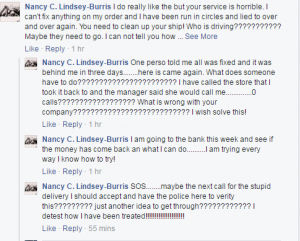
Whether you want to admit it or not, competitors are out there and they’re likely just as hungry as you are. This post is going to provide you with a simple and easily adoptable process that will help you examine and best keep tabs on your competition. You’ll be able to feed off of their weaknesses as well as their strengths to help start a successful online business. You’ll not only better understand the landscape, but you’ll also learn how to best position your small business for success and get you thinking like a true entrepreneur.
Watch this week’s #SellMore video to learn how to identify, understand and keep tabs on your competition so you never have to worry about them sneaking up behind you.
Finding Your Competitors
There are many ways identify key competitors in your industry. As with any research, you will want to start with a simple Google search. Search for items including your business name, product ideas and overall business idea. Google will likely be where you do most of your legwork around your competition.
From there, check out different social media channels, organizations and online communities. Other resources you can use to dig up information on your competitors include Alexa, Compete, Keyword Spy, Hoovers and ReferenceUSA. Your ultimate goal right now should be to cast a wide net and get a better grasp of the competitive landscape.
Categorizing Your Competitors
As you look at different competitors, you’ll want to categorize them. This will help you to identify other online stores that are direct competitors while still keeping an eye on those competitors that aren’t currently direct, but could easy pivot. Here is an easy way to categorize sellers in your industry:
- Primary Competition: This infers a direct competitor, which means they’re basically doing the same thing you aim to do with your online store. They could be targeting the same audience with their brand and positions and/or have a similar product or service offering.
- Secondary Competition: This could indicate a competitor who offers the high end version or low end version of your product, or speaks to a completely different target audience. One example would be you’re both selling watches, but while you are looking to sell Timex, they are selling Rolex.
- Tertiary Competition: This is more of a bonus category and really comes in handy when you’re looking to expand your product catalog. To someone just starting an online store, this may not be as valuable, but it’s wise to keep track of trending products and services as well as opportunities to pair up with other businesses. So, for instance, the competitor you identify could have an online store that sells gems and stones, while you want to sell jewelry.
As you conduct your research, you may want to think about placing this information within a database of some kind, which could be as simple as a spreadsheet. The answer doesn’t always have to be complicated. To start, track the basics; name of store, location of their business, mission statement (if they have one), product or service offering, strengths and weaknesses of their business, and the category of competition in which you identify them.
Stay tuned for next week’s #SellMore post in which we get more technical about exactly how to size up your competition.
(352)
Report Post






